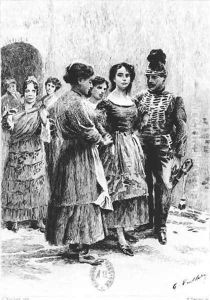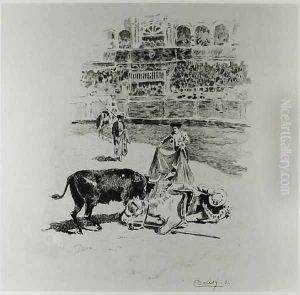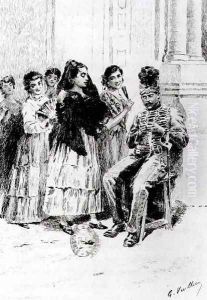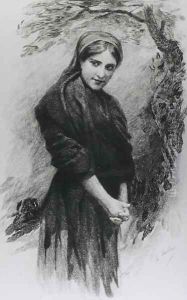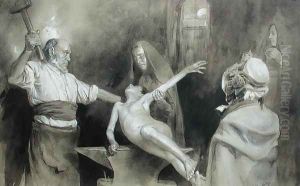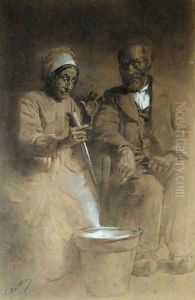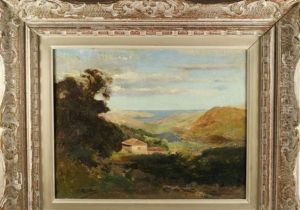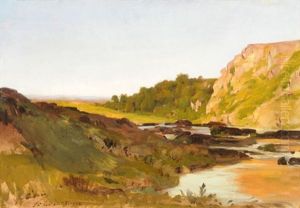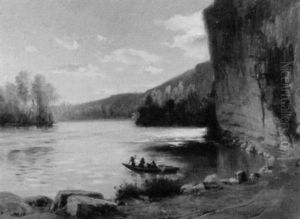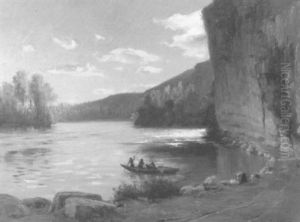Gaston Vuillier Paintings
Gaston Vuillier was a French illustrator, writer, and traveler, known for his detailed and evocative illustrations, as well as his ethnographic and archaeological studies. Born on December 19, 1846, in the town of Agen in southwestern France, Vuillier showed an early interest in the arts and soon dedicated himself to becoming an artist. His works often reflect his fascination with cultures and landscapes, which he encountered during his extensive travels across Europe, North Africa, and the Middle East.
Vuillier's artistic career flourished in the late 19th and early 20th centuries, a period marked by a growing interest in exotic and remote cultures in European society. He contributed illustrations to various periodicals and published books, utilizing his keen observational skills to bring distant worlds to the European audience. His work was not limited to illustration; he also wrote extensively on the subjects of his travels, combining his artistic talents with a scholarly approach that enriched the French understanding of foreign cultures.
One of his notable works includes 'The Dance of Death,' a comprehensive study of the Danse Macabre motif in art, which was published in 1896. This work showcased his deep interest in the historical and cultural significance of the themes he chose to depict. Vuillier's contributions to the understanding of folk dances, rituals, and customs were significant, with his detailed drawings offering valuable insights into the practices of various communities.
Vuillier's illustrations are characterized by their meticulous detail and vibrant storytelling. Whether it was capturing the essence of a landscape or the subtleties of human expression, his work conveyed a strong sense of place and atmosphere. His legacy is preserved in the form of his published works and illustrations, which continue to be appreciated for their artistic and cultural value.
Gaston Vuillier passed away on February 7, 1916, leaving behind a rich portfolio of work that continues to engage and inform those interested in the intersection of art, anthropology, and history. His dedication to exploring and documenting the world through his art makes him a notable figure in the realm of French illustrators and ethnographers.
